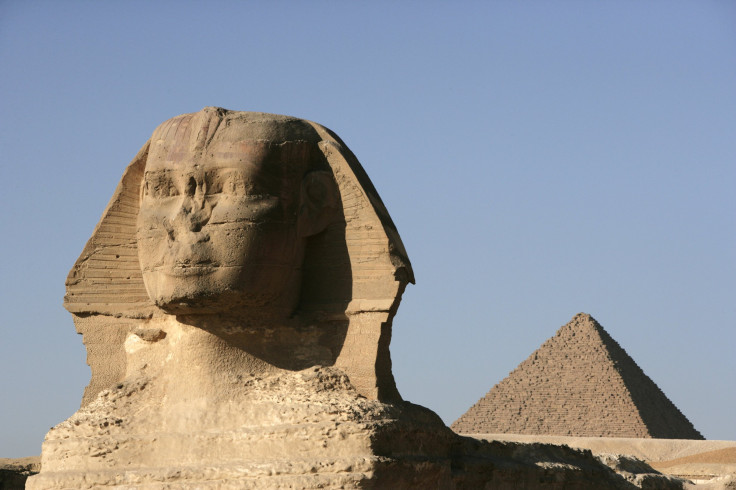Archaeologists Unearth 1923 'Ten Commandments' Sphinx From California Dunes

Ancient civilizations left behind remnants so wondrous that there is an entire industry of people who claim they could not have been made without the help of aliens. Things like the pyramids and the Great Wall of China are incredible feats of engineering. An archaeological dig in central California this week showed that our civilization’s ruins will be slightly different.
Reported by ABC, a dig in the Guadalupe-Nipomo Dunes unearthed a 300-pound plaster Sphinx. No, there were not ancient Egyptians in California; it was a prop for Cecil B. DeMille’s 1923 epic The Ten Commandments . Remarkably, it was actually the second of its kind recovered from the 18-mile dune system that stretches along the state’s Pacific coast.
According to Dunes Center Executive Director Doug Jenzen, it is the most pristine prop anyone has found in the dunes, with most of its original paint still intact. That is impressive for a prop that was only designed to look good for however long it took to film The Ten Commandments 90 years ago. Once production was complete, DeMille had everything buried instead of choosing to preserve any of it.
To be fair, the movie business was still young and things may not have been preserved quite like they are now. It may be overdue, but justice has been served, as the Sphinx will go on display in the Guadalupe-Nipomo Dunes museum next summer. The Sphinx was part of one of the largest movie sets in history, which was effectively an entire fake city. The “lost city of DeMille” has been the subject of intrigue for decades among film enthusiasts.
DeMille’s 1923 epic was a technicolor marvel that, ironically, does not get much use out of its expensive biblical set pieces. Most of The Ten Commandments actually takes place in present day as a religious parable about two brothers on opposite ends of the moral spectrum. DeMille would actually remake his own film with the same title in 1956. That version of The Ten Commandments excised the modern-day story in favor of a star-studded biblical epic starring Charlton Heston and Yul Brynner. The Academy Award-winning remake was one of the biggest movies of its time and is preserved in the Library of Congress.
Stories like this will likely continue to come out until every piece of DeMille’s lost city has been uncovered. It is Hollywood’s equivalent to when Atari buried nearly 1,000 video game cartridges in the desert in the 1980s. Both stories are examples of people in young industries throwing away things that would, over time, become highly sought after artifacts because a culture of preservation had not developed yet.
© Copyright IBTimes 2024. All rights reserved.











